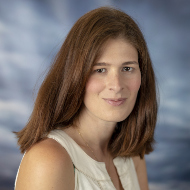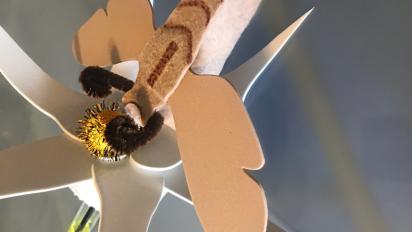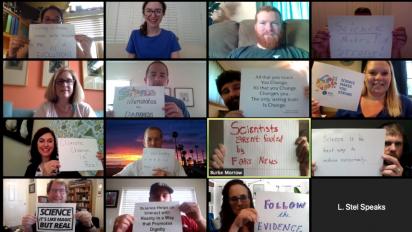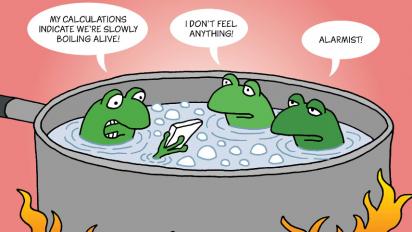Inside Outreach: Pollinators on the Move
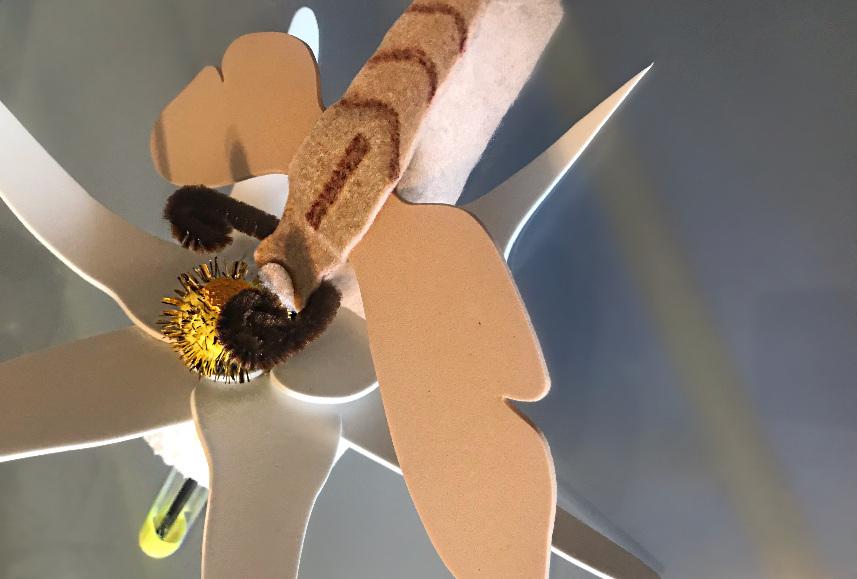
No one wants to be told their outreach activity stinks. However, Taryn Dunivant, a master’s student in ecology and evolutionary biology at the University of Kansas and a 2019 NCSE Graduate Student Outreach Fellow, would take it as a compliment.
As part of her fellowship, Dunivant designed an activity, Pollinators on the Move, which includes a giant red stink flower replica that gets pollinated by participants wearing fly goggles. The beautiful flower replicas, which Dunivant constructed by hand, attract the participants to the activity. But it’s the foul scent that gets them to start asking nuanced questions about evolution, particularly about how the plant’s odor of rotting meat may be an adaptation to attract scavenging insects. “One thing that I love about the activity is that you don’t have to do much to get people engaged because it has such a visual presentation—it immediately draws people in,” Dunivant notes.
While playing Dunivant’s activity, participants not only can pollinate a stink flower as a fly, but also can take on the role of a bat pollinating a funnel flower or wear UV “bee goggles” to pollinate an aster.
Thirty-five percent of crop plants rely on animal pollinators, and there is strong selective pressure to help maintain plant genetic diversity. As a result, these plants have evolved some creative strategies for attracting pollinators. While playing Dunivant’s activity, participants not only can pollinate a stink flower as a fly, but also can take on the role of a bat pollinating a funnel flower or wear UV “bee goggles” to pollinate an aster. Participants can find success as a pollinator in all these different roles. However, they also are helped to understand that the animals they represent don’t know they are pollinators. Instead, the animals use the plants for food or shelter and the plants respond by developing traits as appealing as possible to their most efficient pollinator. Over time—in some cases, tens of millions of years—plants have developed highly specialized relationships with their pollinators. The close relationship between flowering plants and their pollinators also highlights the overlap between evolution and climate change, as small changes in range or emergence time in a specialist species can cause a cascade of negative impacts throughout the ecosystem.
Pollinators on the Move also includes a game about sphinx moths and orchids, which provides hands-on experience of mutualistic, antagonistic, and competitive relationships as participants attempt to find the only moth capable of both drinking the orchid’s nectar and collecting its pollen. “The result of playing this activity is that participants think about coevolution,” Dunivant explains.
Originally working as a makeup artist and at a warehouse that sold small greenhouses, Dunivant came to love science later in life, returning to school for her master’s degree. Thanks to her earlier experiences, her focus has always been on helping people explore science through attractive visual elements that lead to deeper engagement. Dunivant will graduate from the University of Kansas and start a Ph.D. program in plant biology at the University of California, Riverside, in the fall of 2021. Dunivant has created a highly engaging and aesthetically attractive activity kit to share her love of design and science, and NCSE is proud to have helped. Pollinators on the Move will be NCSE’s next national release activity, distributed to all of our partners. If you want to teach your community about pollination and selective pressures, download the activity guide.
This article has been modified slightly from its original print format.

